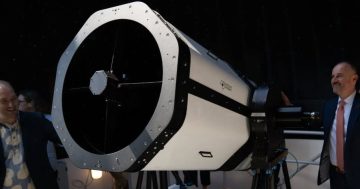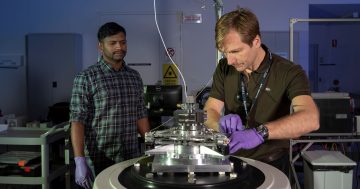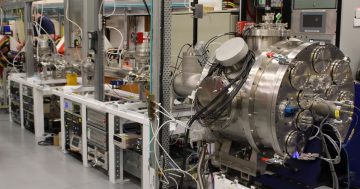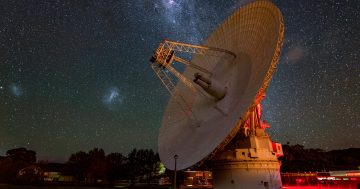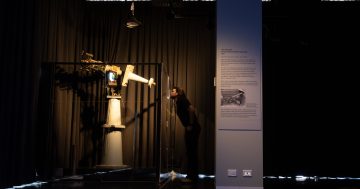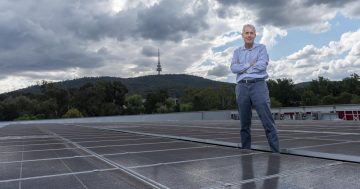
The ANU’s Mount Stromlo Observatory is ideally located to host the new ground station. Photo: ANU.
A new communications station at the ANU’s Mount Stromlo Observatory will unlock data from space at super-fast speeds and talk to future space missions.
The ANU says the $2.4 million Quantum Optical Ground Station, a first for Australia, will help researchers and industry better access unused data about our Universe as well as enable better monitoring of our own planet.
The station, announced on Thursday (5 September) by Minister for Advanced Technology and Space Industries Mick Gentleman, comes with $800,000 in ACT Government funding, and includes a new telescope.
Project lead Dr Francis Bennet from the ANU Research School of Astronomy and Astrophysics said the new station would develop technologies that enable licence-free and secure high-bandwidth data transmission to and from space.
“Most of the data we capture from satellites and instruments in space never finds its way back down to Earth,” Dr Bennet said. “The onboard processing in these machines means we are often left in the dark about our own planet, as well as the mysteries of the Universe.
“For example, the Keppler space telescope launched by NASA to discover Earth-sized planets was only able to transmit one per cent of the data it captured back home. That means we missed out on 99 per cent of what was found.
“This new ground station will change all that. It will give us the ability to tap into the massive volumes of data we gather each day in space, as well as improve monitoring of our Earth’s water, weather and other vital signs.”
The new station will also develop technology that could one day replace the undersea fibre optical cables global telecommunications is currently reliant on, as well as assist satellites from Asia in their space and Earth monitoring and telecommunications work.
Mr Gentleman said the station would assist space science and exploration, including linking with the OSIRIS payload that will soon launch to the International Space Station and communicating with astronauts on future moon missions.
“This continues Canberra’s legacy of providing vital communication capabilities in the Southern Hemisphere for international space missions,” he said.
The ACT lost its bid to host the new Australian Space Agency to Adelaide but Mr Gentleman said the space industry remained an important contributor to the local economy, attracting jobs, international business and world-leading research groups.
He said that according to industry estimates, almost one in four of Australia’s space sector jobs – around 2000 jobs – were in Canberra.
“We are committed to working with Canberra’s university and research sector to build a sustainable and globally competitive space industry in the ACT,” Mr Gentleman said.
The ANU station will be the first in an Australian network of optical ground stations, with partners in Western Australia, South Australia, and New Zealand.
ANU Provost Professor Mike Calford thanked the ACT Government for its vital funding and said Canberra was the perfect place for the new station.
“Canberra enjoys exceptional natural conditions for this type of work. And it is backed by the world-leading and globally recognised space research and development taking place each day at ANU,” he said.
“This new station will help position Australia and the ACT as one of the world’s leading centres in the burgeoning field of quantum space communications, and boost the nation’s space efforts.”












